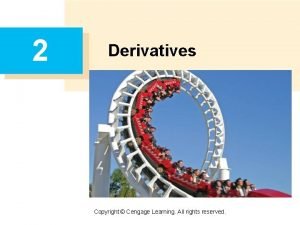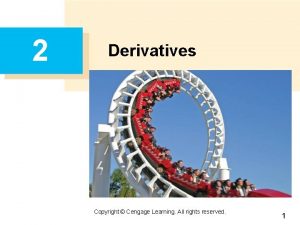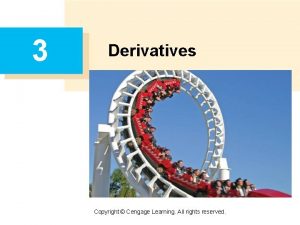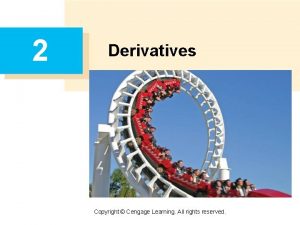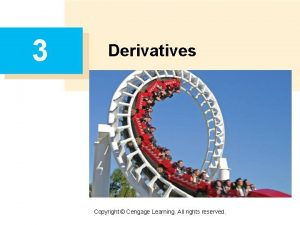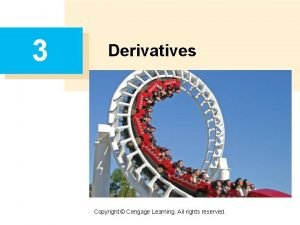2 Derivatives Copyright Cengage Learning All rights reserved








- Slides: 8

2 Derivatives Copyright © Cengage Learning. All rights reserved.

2. 8 Related Rates Copyright © Cengage Learning. All rights reserved.

Related Rates If we are pumping air into a balloon, both the volume and the radius of the balloon are increasing and their rates of increase are related to each other. But it is much easier to measure directly the rate of increase of the volume than the rate of increase of the radius. In a related rates problem the idea is to compute the rate of change of one quantity in terms of the rate of change of another quantity (which may be more easily measured). The procedure is to find an equation that relates the two quantities and then use the Chain Rule to differentiate both sides with respect to time. 3

Example 1 Air is being pumped into a spherical balloon so that its volume increases at a rate of 100 cm 3/s. How fast is the radius of the balloon increasing when the diameter is 50 cm? Solution: We start by identifying two things: the given information: the rate of increase of the volume of air is 100 cm 3/s and the unknown: the rate of increase of the radius when the diameter is 50 cm 4

Example 1 – Solution cont’d In order to express these quantities mathematically, we introduce some suggestive notation: Let V be the volume of the balloon and let r be its radius. The key thing to remember is that rates of change are derivatives. In this problem, the volume and the radius are both functions of the time t. The rate of increase of the volume with respect to time is the derivative d. V/dt, and the rate of increase of the radius is dr /dt. 5

Example 1 – Solution cont’d We can therefore restate the given and the unknown as follows: Given: = 100 cm 3/s Unknown: when r = 25 cm In order to connect d. V/dt and dr/dt, we first relate V and r by the formula for the volume of a sphere: V = r 3 6

Example 1 – Solution cont’d In order to use the given information, we differentiate each side of this equation with respect to t. To differentiate the right side, we need to use the Chain Rule: Now we solve for the unknown quantity: 7

Example 1 – Solution cont’d If we put r = 25 and d. V/dt = 100 in this equation, we obtain The radius of the balloon is increasing at the rate of 1/(25 ) ≈ 0. 0127 cm/s. 8









